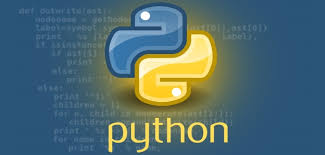Source: searchapparchitecture.techtarget.com
Picking the right programming language can overwhelm some developers, given the sheer number of factors to consider. Python and Ruby both sit high on developers’ lists, mainly because of their ease of use, levels of power and dynamic flexibility.
However, these languages do not behave the same way, and there are a few key elements developers should consider before they choose one. Learn the backgrounds of Python and Ruby, then examine the factors — startup speed, mobile-friendliness and more — that determine which language is right for your project.
Design of Python and Ruby
Python is an object oriented programming (OOP) language that has elegant, human-readable syntax and sophisticated development features. It offers beginner-friendly tools and components, and is advanced enough for mature developers.
Python emphasizes readable code, simplicity of the underlying implementation and a single, standardized library. Programmers gravitate toward Python because of its versatility, extensive libraries and community support. Developers can deploy various frameworks, including Django, Pyramid and TurboGears. In addition to a mature and well-documented library, the Python Package Index makes thousands of supplemental libraries available. Python runs on every major OS and is used in every domain, from systems operations and web development to scientific modeling and computational analytics.
Released in 1991, Python was designed to enable application builds through a command-line interface or cross-platform GUI-based approach. At the time of publication, Python supports two versions: Python 2.7 and Python 3. The user base continues to gain supporters and Python users outnumbered Java users in 2019, according to Stack Overflow.
Ruby is also an OOP, versatile and general-purpose language suitable for small, ad hoc scripting tasks or advanced front-end and back-end application development. Similar to Python, it offers capabilities that are simple enough for beginners to learn and powerful enough to meet the demands of experienced programmers.
Ruby promotes an implicit coding approach. It is highly portable and runs on all platforms, including Unix, MacOS and Windows. For example, the Windows Ruby installation includes the Win32 API library, which enables access to all Windows dynamic link library calls. Ruby also embodies key concepts and features from languages like Perl, Smalltalk and Lisp.
Publicly released in 1995, Ruby employs the popular Ruby on Rails framework, as well as Merb, Nitro, Hanami and the domain-specific language Sinatra. Ruby on Rails is geared toward rapid prototyping, which gives users efficiencies for building both front-end and server-side elements. The framework offers support scripts, database back ends and libraries. Developers can also build applications and access libraries that include XML parsers, GUI bindings, networking protocols and game components.
The difference between Python and Ruby
In general, both languages are similar in the programming tools and features they provide. However, here are some significant differences.
A key aspect of Python is its use as glue code for server-side scripting to ensure communication between front-end and back-end components. As a scripting and automation language, Python also employs constructs that control the order and flow of task execution. Moreover, through code repeatability and automation, programmers can simplify their build processes.
Python also provides clean syntax and script automation. It’s an interpretive language, but keep in mind that interpreter overhead can create slow compile times and lags in system calls and kernel requests.
Python is not particularly effective for writing mobile applications, but tools and libraries are continually delivered to augment these capabilities.
Ruby also functions as glue code and provides developers with custom shell commands, application wrappers and rapid application prototyping. Its object-oriented approach consists of actions, known as methods, and simple naming conventions that denote the scope of certain variables. Developers can give every bit of Ruby code specific properties and actions to perform.
In terms of memory, garbage collection in Ruby eliminates the need to maintain reference counts in extension libraries. This helps to curb high memory utilization and memory fragmentation caused by multithreading processes. Also, Ruby’s extension handling features simplify the process to catch and cut errors in code.
On the other hand, the startup speed of Ruby is uniformly slow, which can negatively impact performance. And while the Ruby community is generally supportive, written documentation is lacking, which can be problematic for developers who typically rely on test suites and physical code reviews to understand program behavior.
